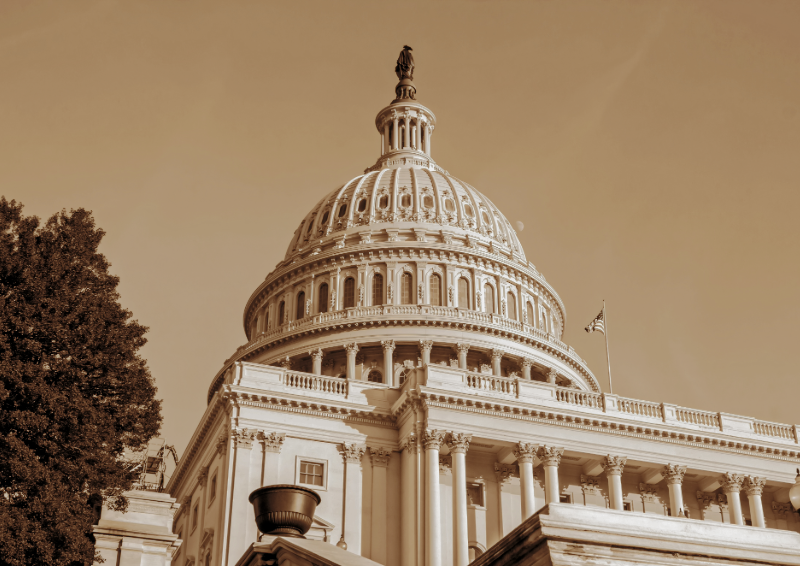Reading between the tax lines
I recently reviewed the latest version of President Trump’s tax proposal, informally branded the “Big Beautiful Bill” and officially titled the One Big Beautiful Bill Act. While the name sounds more like theater than policy (I guess it’s bringing both as we watch the live war on X between President Trump and Elon Musk unfold in our office), the proposed bill has some large ramifications for all of us. Though the legislation process is still in flux and changes are sure to be made before passing, its direction is clear: lock in and expand much of what was passed under the 2017 Tax Cuts and Jobs Act (TCJA).
I am no tax professional and refrain from giving advice, but here are a few things that I think are worth paying attention to:
Making TCJA Permanent
Tax Cuts
The headline feature is a permanent extension and even expansion of the TCJA’s individual tax cuts, which are otherwise set to expire at the end of 2025. The TCJA reduced the top individual income tax rate from 39.6% to 37% and increased the threshold for the top tax bracket to $600,000. The proposed bill aims to make this permanent (including the bottom rate of 10% for lower earners).
Estate and Gift Tax Exemption
Under the TCJA, the federal estate and gift tax exemption was increased to $13.99 million per individual. The proposed bill seeks to extend this higher exemption level to $15 million ($30 million for joint filers).
What this could mean for you: This could be a golden window for high-net-worth individuals to make large gifts, fund irrevocable trusts, or use tools like GRATs and SLATs. If you’re sitting on a taxable estate, now is the time to consider locking in the exemption while it’s still available.
Child Tax Credit (CTC) Increase
The bill also proposes extending and modestly expanding the Child Tax Credit to $2500, building on recent increases from COVID-era legislation, with expanded refundability and minimum income phaseouts maintained or increased.
SALT Deduction Cap Raised – Relief for High-Tax States Like Hawaii
The proposal raises the State and Local Tax (SALT) deduction cap from $10,000 to $40,000. That’s especially impactful for residents of high-tax states including California, New York, and yes, Hawaii.
What this could mean for you: A higher deduction cap gives high-income residents a powerful way to reduce federal tax liability, especially when paired with other tax efficient strategies like using donor advised funds or other charitable giving strategies.
Mortgage Interest Deduction
Mortgage interest may be deducted, but the limit will continue to be set at $750,000 in mortgage debt.
What this could mean for you: This continues to potentially impact homeowners in high market areas, where they may still face limitations on deductibility, influencing loan decisions and home affordability.
Qualified Business Income (QBI) Deduction
The TCJA introduced a 20% deduction on qualified business income for owners of pass-through entities. The proposed bill aims to extend this deduction, benefiting individuals who own businesses structured as sole proprietorships, S corporations, and partnerships.
Other Business-friendly Deductions: The bill also includes bonus depreciation measures for equipment expenses, deductions for research and development costs, and an increase in business interest deductions.
What the TJCA extension overall means for you: You have some breathing room when it comes to planning. If you’re considering a Roth conversion, selling a business, or timing capital gains, a little bit of certainty and stability on tax brackets helps. It’s important to keep in mind, however, that “permanent” in tax policy often just means “until the next party takes power.”

New Proposals
“MAGA Accounts” – A Modest but Flexible Tool for the Next Generation
One of the more headline-grabbing ideas in the bill is the introduction of “MAGA Accounts” or tax-deferred investment accounts for children under age 8. These accounts would allow annual contributions of up to $5,000 per child, with tax-deferred growth and withdrawals taxed at favorable long-term capital gains rates.
What this could mean for you: For high-net-worth families looking to instill financial literacy and begin early-stage wealth transfer, this is a welcome, although modest, tool. A $5,000 annual cap probably isn’t going to move the needle from an estate planning perspective, but over time, it could grow into a meaningful asset for a child or grandchild. While MAGA accounts may offer more flexibility than 529s, since distributions aren’t tied to qualified education expense, gains will be taxed.
In the end, MAGA Accounts probably won’t transform your estate plan, but they do offer a tax-efficient, long-term way to seed investment habits and transfer small sums to the next generation.
Added Senior Tax Deduction
Seniors aged 65 and older would get an additional $4,000 deduction with AGI less than $75,000 for single filers and $150,000 for joint filers. This is an addition to the already in place deductions of $2,000 (single filers) and $3,200 (joint filers) for those 65 and older.
What this could mean for you: It is important to note here that while President Trump proposed eliminating social security taxes, this tax bill keeps those in place. The added senior tax deduction discussed above may help offset those tax liabilities for certain seniors at higher income levels.
Elimination of Taxes on Tips and Overtime
The bill proposes making tips and overtime income tax free.
What this could mean for you: For most high-net-worth investors, not much. But if you own a service-based business or manage a workforce with variable comp, this could impact payroll design and incentive planning.
Rollback of Green Energy Incentives – Headwinds for ESG and Home Solar
The bill includes rollbacks of key clean energy tax credits introduced under the Inflation Reduction Act, including those for electric vehicles, home solar systems, and energy-efficient renovations.
What this could mean for you: If you’re planning to install rooftop solar, buy an EV, or upgrade your HVAC system, the loss of federal tax credits could make those choices less financially attractive.
For investors, this introduces potential headwinds for ESG and renewable sectors, at least in the short term. The long-term global trend still favors decarbonization, but this could present short-term headwinds for U.S.-based green investments.

Moving Forward
Whether you’re a business owner, investor, or retiree, the “big beautiful bill” will reshape your tax planning and investment landscape in various ways. While the bill still faces Senate scrutiny, now may be the time to review your financial strategy and prepare for potential changes with members of your financial team.
Long term, it’s important to add that the Congressional Budget Office estimates that the the bill will add $2.4 trillion over the next decade to the ever-expanding debt, projected to now be $52 trillion plus in 2034. While the administration argues that enhanced economic growth and resulting wage increases (and cuts to Medicaid, Supplemental Nutrition Assistance Program, and the IRS) will pay for this massive cut in revenue, it will be important to monitor the ever-increasing deficit moving forward and how that impacts all of us. I will leave that larger discussion for the near future!



